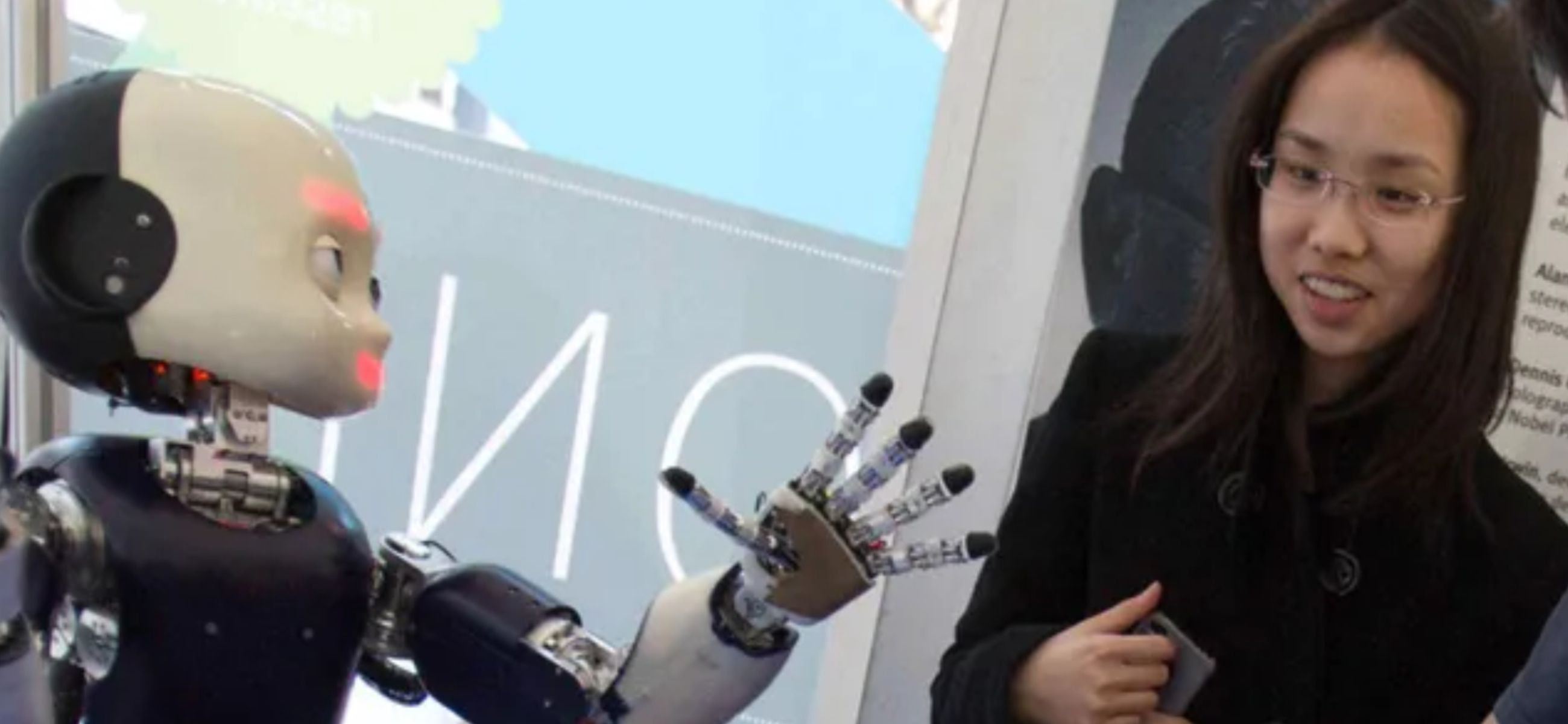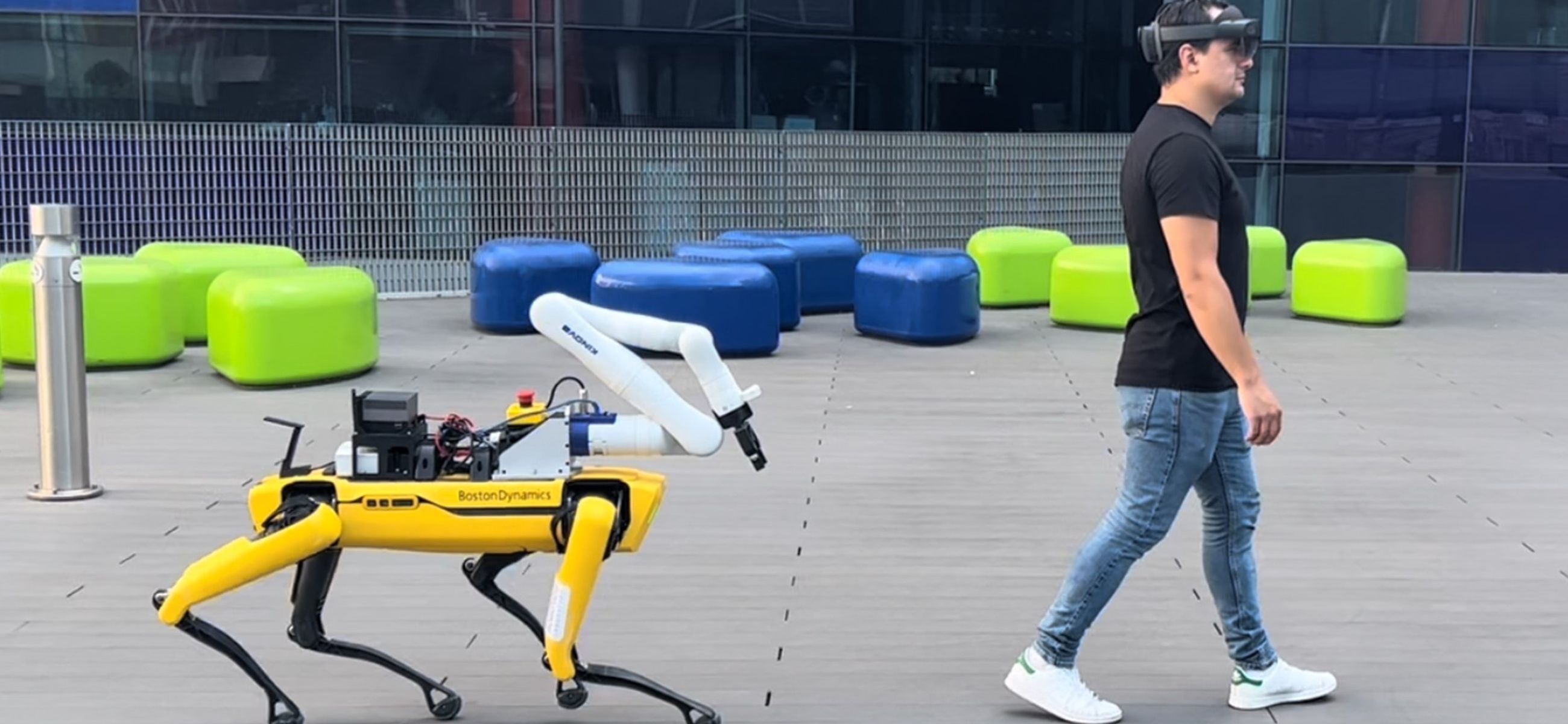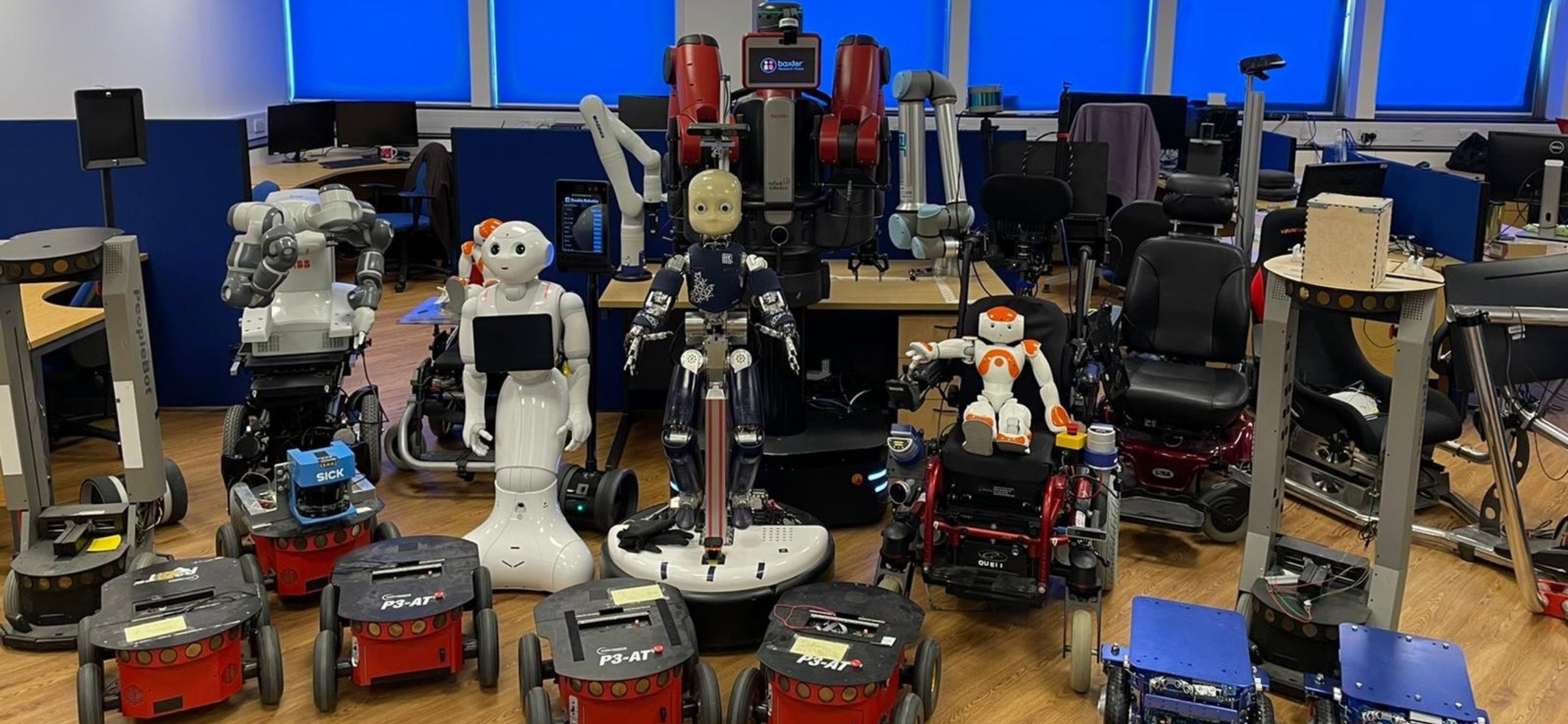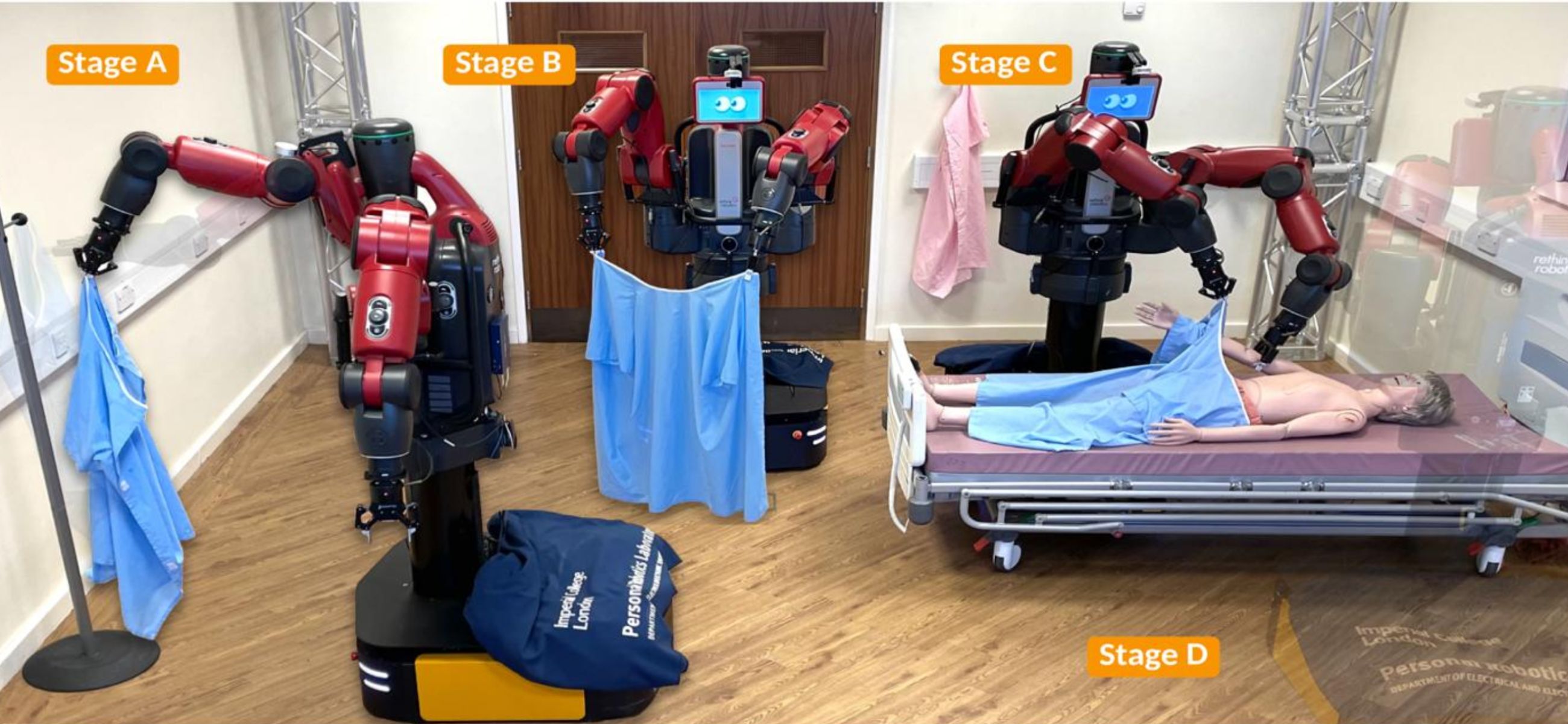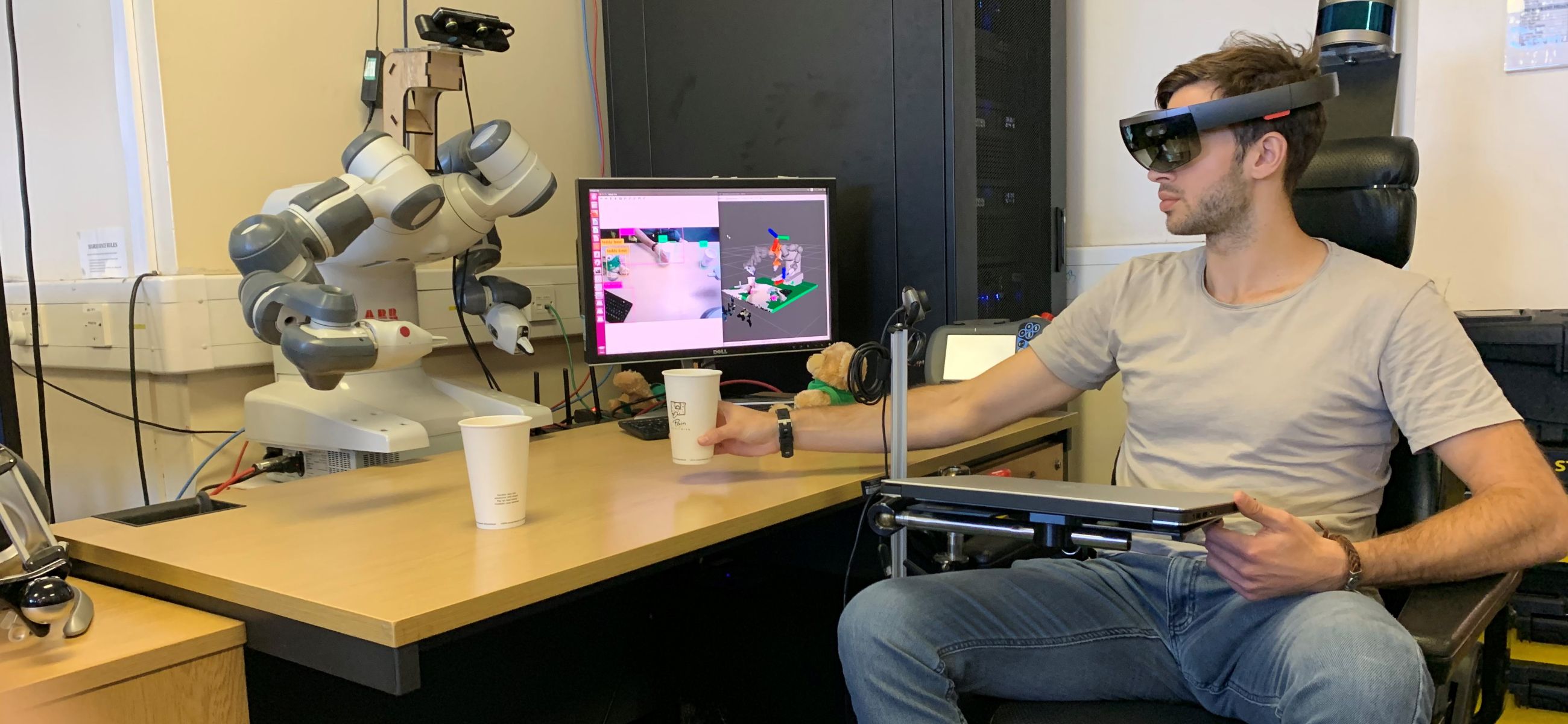Lab overview
In the Personal Robotics Lab, we perform research towards intelligent robotic devices that are capable of interacting with their users, learning from this interaction, as well as adapting the assistance provided in order to maximise their users' physical, cognitive and social well-being. Our research spans several topic areas, including machine learning, user modelling, cognitive architectures, human action analysis and shared control. We are aiming at advancing fundamental theoretical concepts in these fields, but without ignoring the engineering challenges of the real world, so our experiments involve real robots, real humans and real tasks.
Our research is of a highly experimental nature and is internationally well recognised through accepted papers at major conferences, renowned scientific journals and frequently invited presentations.
